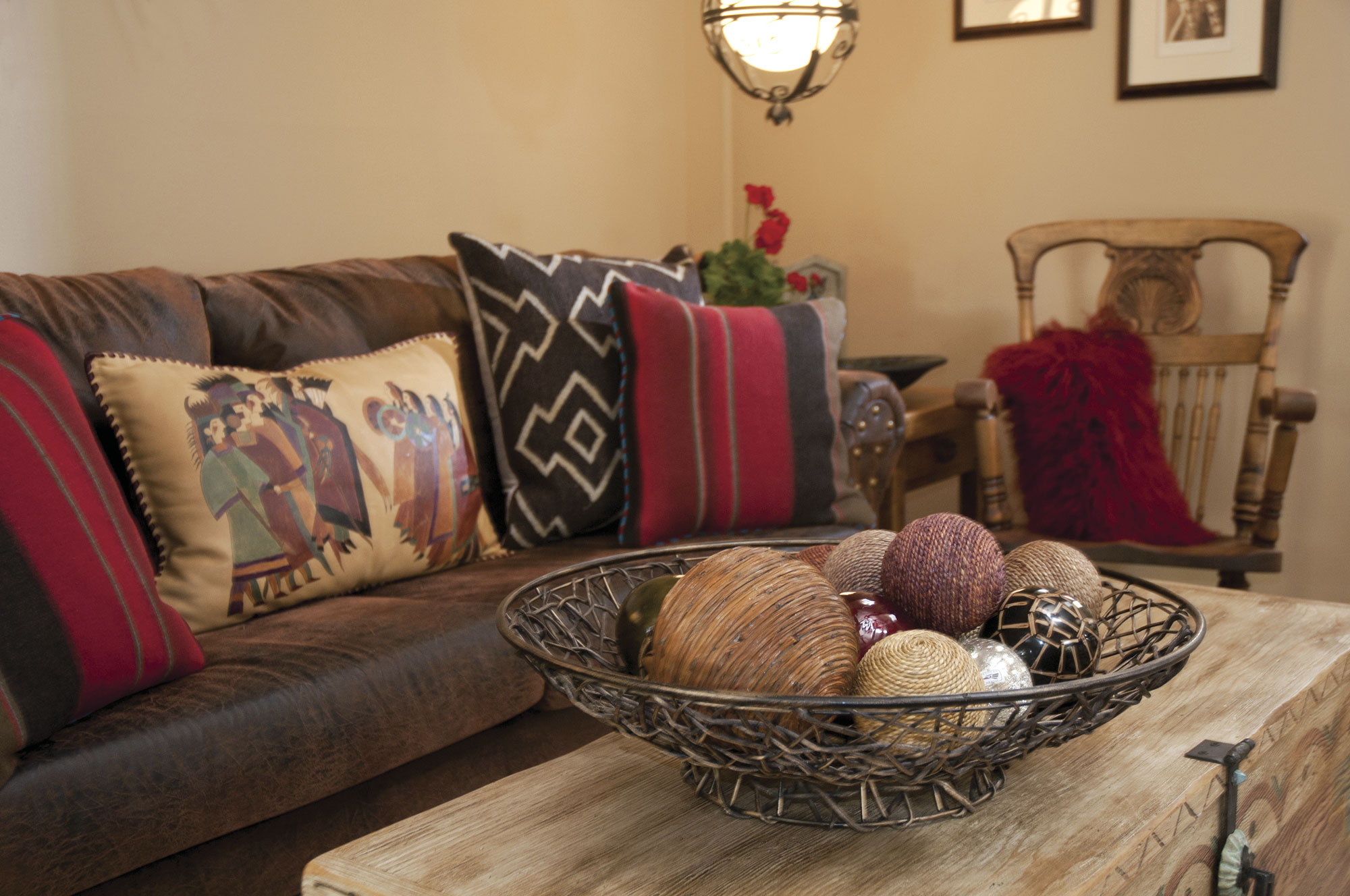
01 Apr Designing the West: Artistic Genesis
Interior designers have different ways of handling initial client consultations. Some begin with budget discussions or a lifestyle questionnaire, and others ask their clients to show them photos of rooms they like. Santa Fe-based designer Jennifer Ashton starts the explorative process with a simple request: “Show me your art.”
“I get the art conversation happening early, to learn how my clients are moved by it,” she says. “The sooner I know that, the more success I have with my design approach. Seeing what they love helps me discover and identify the elements that will become the key ingredients in the overall design. When we find that place of harmony, everything evolves from there.”
One client even invited Ashton to meet her at a remote storage unit. “She yanked open that enormous door and started pulling out her antiques, special things that were passed down from her family, and pieces from her art collection. Seeing what she treasured really helped me get to know her.”
Ashton credits her mother with inspiring her love of interior design. “I grew up in southern California, and Mom was always redecorating, rearranging and reupholstering to create beauty in our home. As the youngest of three siblings, I was often Mom’s companion when she went to thrift stores to find things she could fix up for our house.”
After getting a liberal arts degree from Fullerton College, Ashton owned two successful retail home and gourmet boutiques for 15 years in Southern California. “I was always creating vignettes in my shops, doing displays and playing with furnishings and accessories. Interior design was a natural progression.”
She and her family moved to Santa Fe in 2001 to slow down, and bought a fixer-upper home. A month later, the events of September 11 occurred. “Like so many people, that was a time for me of taking stock and reevaluating things,” Ashton says. “I decided to take a design class at Santa Fe Community College, and found that it forced my brain to think in new ways. Creatively, it felt very natural and my new path became crystal clear.” She received a degree in interior design and began working with local designers before starting her own firm, Jennifer Ashton Interiors, last year.
From an office and studio in downtown Santa Fe, Ashton’s company provides services for residential, commercial, retail, educational and hospitality clients — including CAD design drawings, elevations, specifications or whatever the project requires. “I enjoy the energy of collaborations with my clients as well as architects and builders,” she says. “The process of working together creatively makes the design come to life.”
She has a special talent for creating vignettes of accessories and furniture, a gift Ashton attributes to her years in the retail business. “I have a displayer’s eye, and I enjoy helping my clients put things together in fresh ways that are livable and artful. I always have design theory in mind and try to balance and contrast the elements in a space. I like to bring in natural and organic things to create warmth and earthiness. I like things ‘done,’ but not too done because you need to feel comfortable.”
As she collaborates with clients in the country’s third-largest art city, Ashton feels grateful for her access to a wide array of top artists and craftsmen. “I’m so fortunate to be here in Santa Fe, which is known for its wonderful artisans and woodworkers,” she says. “I enjoy introducing my clients to the work of artists they may not yet know; that’s always exciting to me. I also love creating custom furniture pieces so we can bring in something completely original that perfectly fits the space.”
Ashton recently helped a client redesign an older home in the historic district of Santa Fe. “We had so much fun,” says the homeowner. “Jennifer is very imaginative, and she listened carefully to my ideas. She worked with me to hang the art I already had, and helped me buy some new pieces. She also encouraged me to stretch a bit on my color choices. For instance, I thought I wanted white subway tile for the kitchen backsplash, but the green glass Ann Sacks tile Jennifer specified is absolutely spectacular; it’s the first thing people notice when they enter the room.”
Ashton also collaborates with designer Ande Hambuchen on a side business, a pillow line called Kissen. “Pillows are like therapy,” Ashton says. “I associate them with comfort, and our designs are modern and playful.”
But above all else, it’s the art that resonates with her. “I always love that first part of the design process, when I look at the art a client has hung,” she says. “Whether we’re using art to influence an upholstery color or planning the entire color palette of a house, I’ll use the pieces they love as a springboard for the design. That’s how I have to start.”
Jennifer Ashton shares some of her favorite tips for designing interiors from an art-centered perspective:
- Live with beauty and joy. For each of us, when we see beauty we know it. Whatever that is for you, see those things of beauty in life every day and enjoy them.
- Love your art. A painting from a garage sale that you truly love is just as relevant as an investment piece. No matter what the economy is around it, if you love a piece of art honor it and place it accordingly.
- Add color. The subtlety of color is as forceful as bold color. With art as the focal point, we’ll find the subtlety or strength in color and let it guide the palette.
- Contrast with white. I like white space, and have been using it as an accent color. I especially like the way white looks against natural and earth tones.
- Find ways to add texture. Right now, I’m into paper art. I love the economy of paper: it’s accessible to anyone yet can be very sophisticated.
- Reclaim and repurpose. Vintage pieces add character and elegance to a space and create balance with new furnishings. We’re doing a lot with reclaimed woods, and I love using weathered doors. I’m working on a wall hanging made from pieces cut from a crazy old quilt.
- Try a new arrangement. Rearranging a room can be a cost-effective way to create change. Begin by looking at the current location of the art. Try moving a prominent piece to an opposite wall, create a new conversation area, or play with the function of a space.
- When in doubt, add pillows. Pillows are great for quick-change accents or a punch of color, and the detail on a pillow can add a relevant design element to a space. Plus, they’re the perfect final touch.
Eliza Cross (www.elizacross.com) is a senior contributing editor for Western Art & Architecture and the author of five books, including the award-winning Family Home of the New West (Cooper Square Publishing). A member of the Authors Guild and American Society of Journalists and Authors, she has written more than 250 articles for a variety of national and regional publications.
- Reclaimed wood tops a metal-framed table in the simple dining room. The framed lithograph is “Angel Food” by Robert Zakanitch.
- Designer Jennifer Ashton blends her California aesthetic with Santa Fe art and traditional craftsmanship.
- Ashton painted this original carved wood doorway arch a creamy cottage white to highlight its “lacy” qualities. The pale blue-green walls are reflected in the glass subway accent tiles Ashton specified for the kitchen backsplash.
- For the restaurant Vanessie Santa Fe, Ashton created a vignette of individual paintings by Enrico Embroli above a rustic wood shelf.
- Lester Berman’s “The Chair”, from Jay Etkin Gallery, accents the original, historic motif around the fireplace.
- Bold turquoise blue walls contrast with fresh, white accessories in a home office, where Ashton paired the client’s antique desk with a contemporary chair and illuminated the space with a modern tinwork pendant.






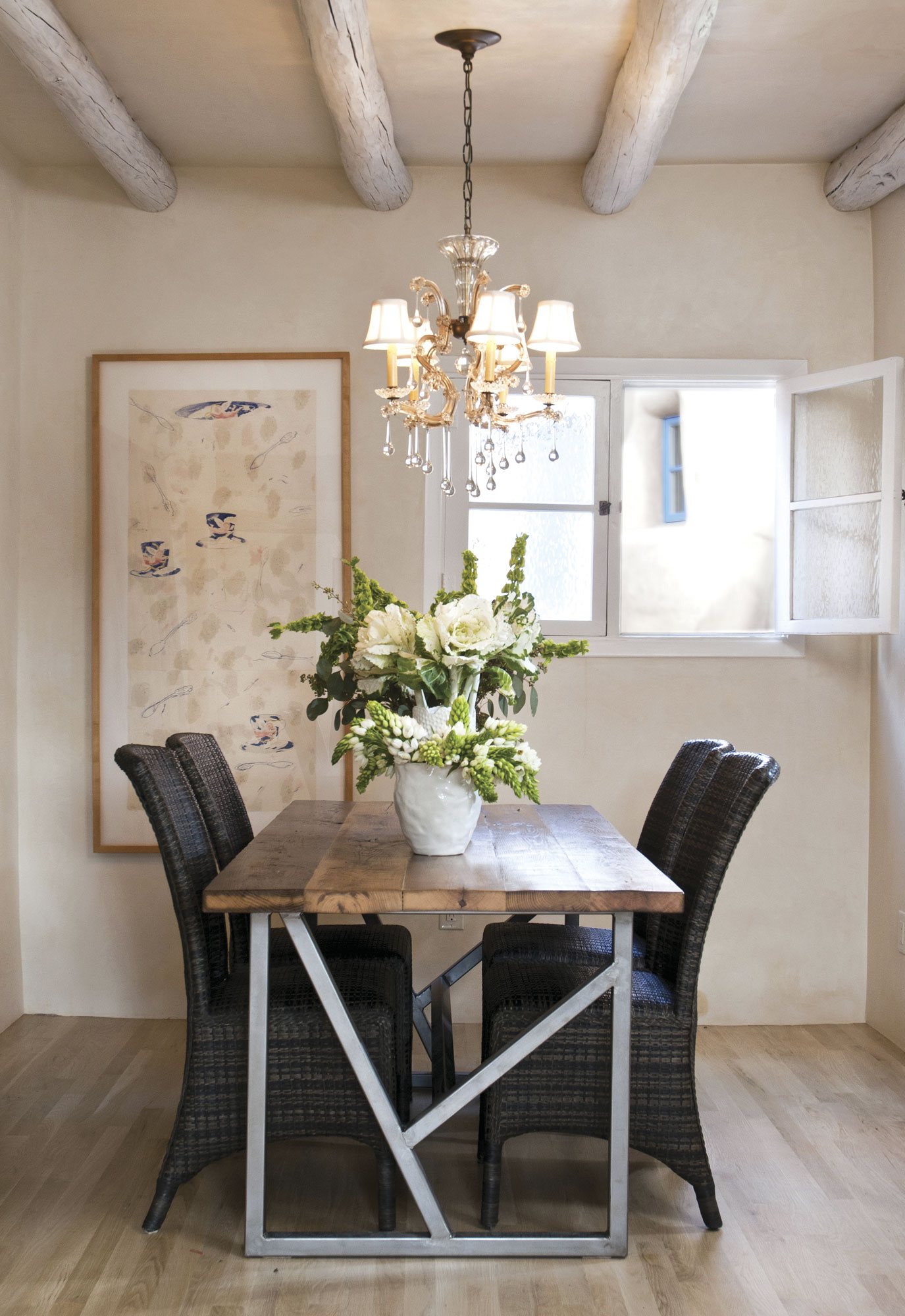
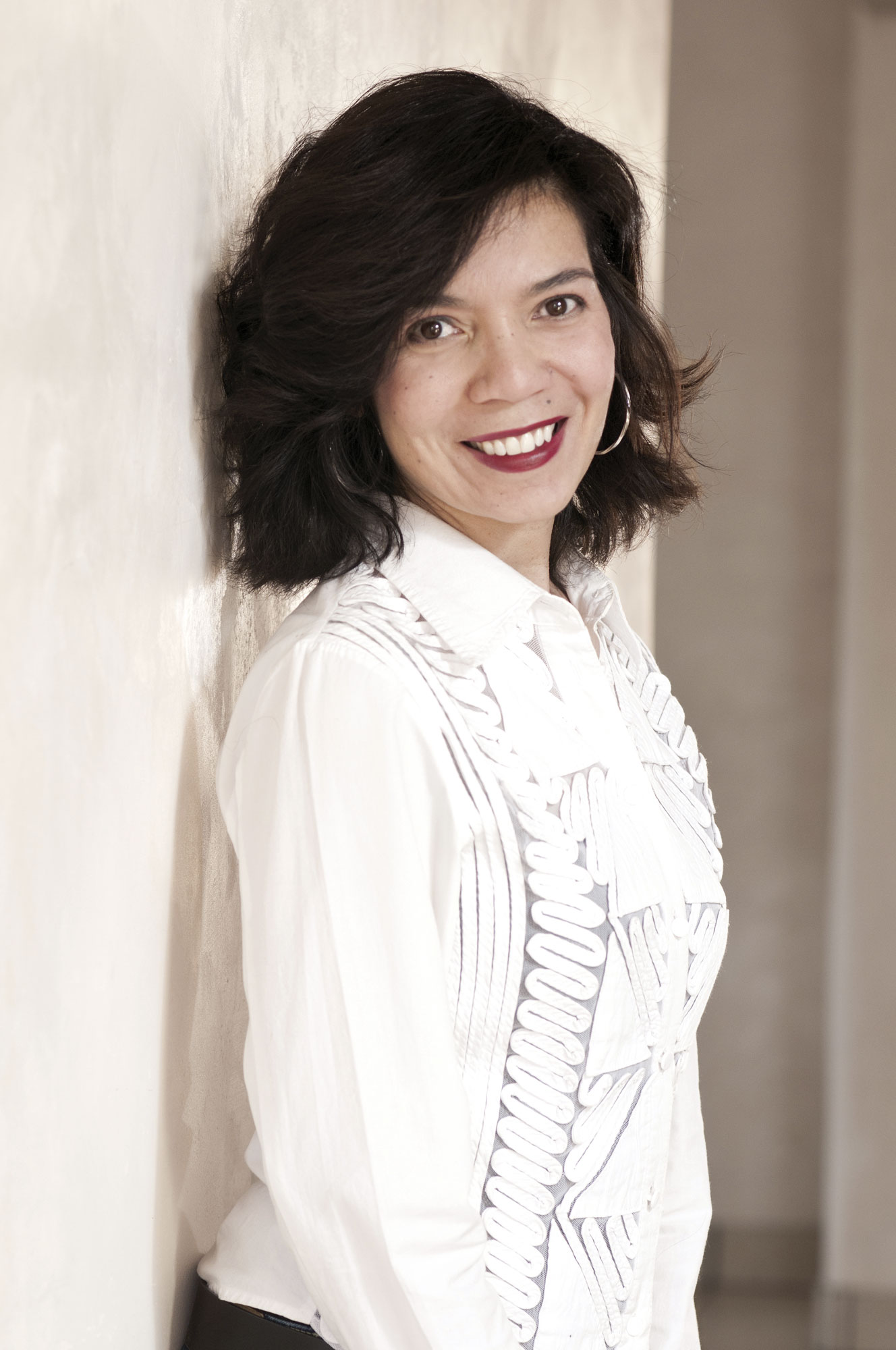
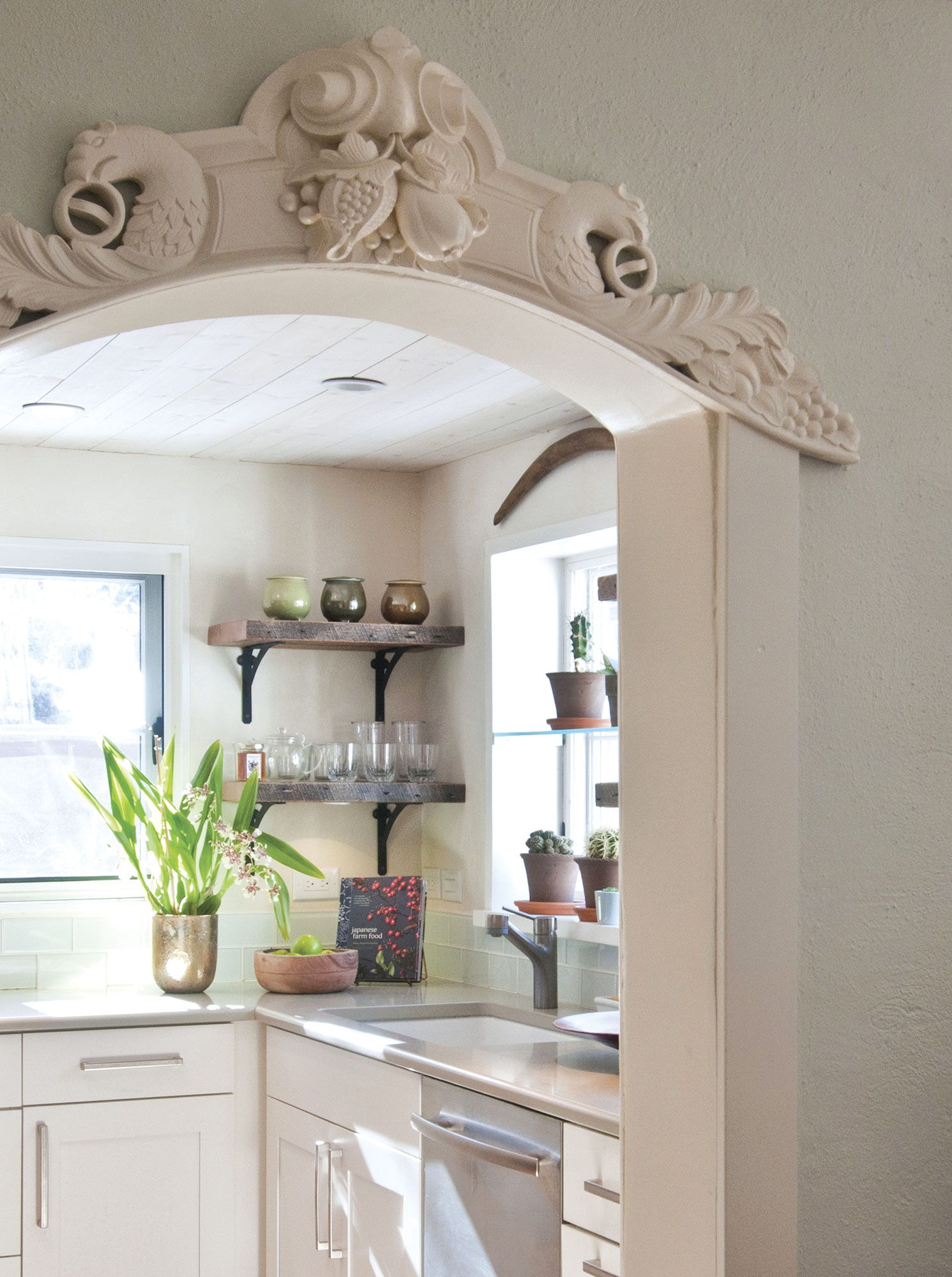
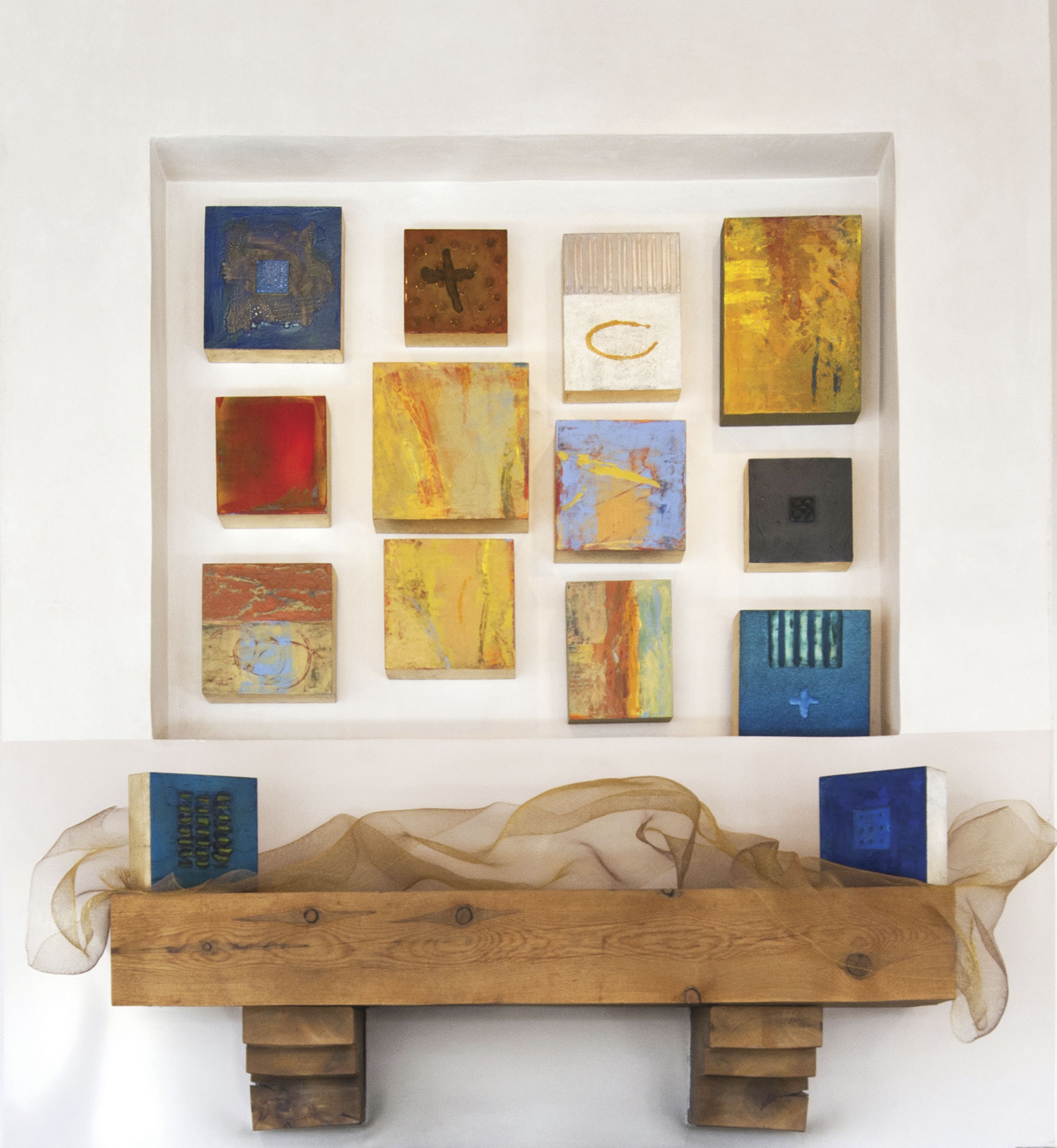
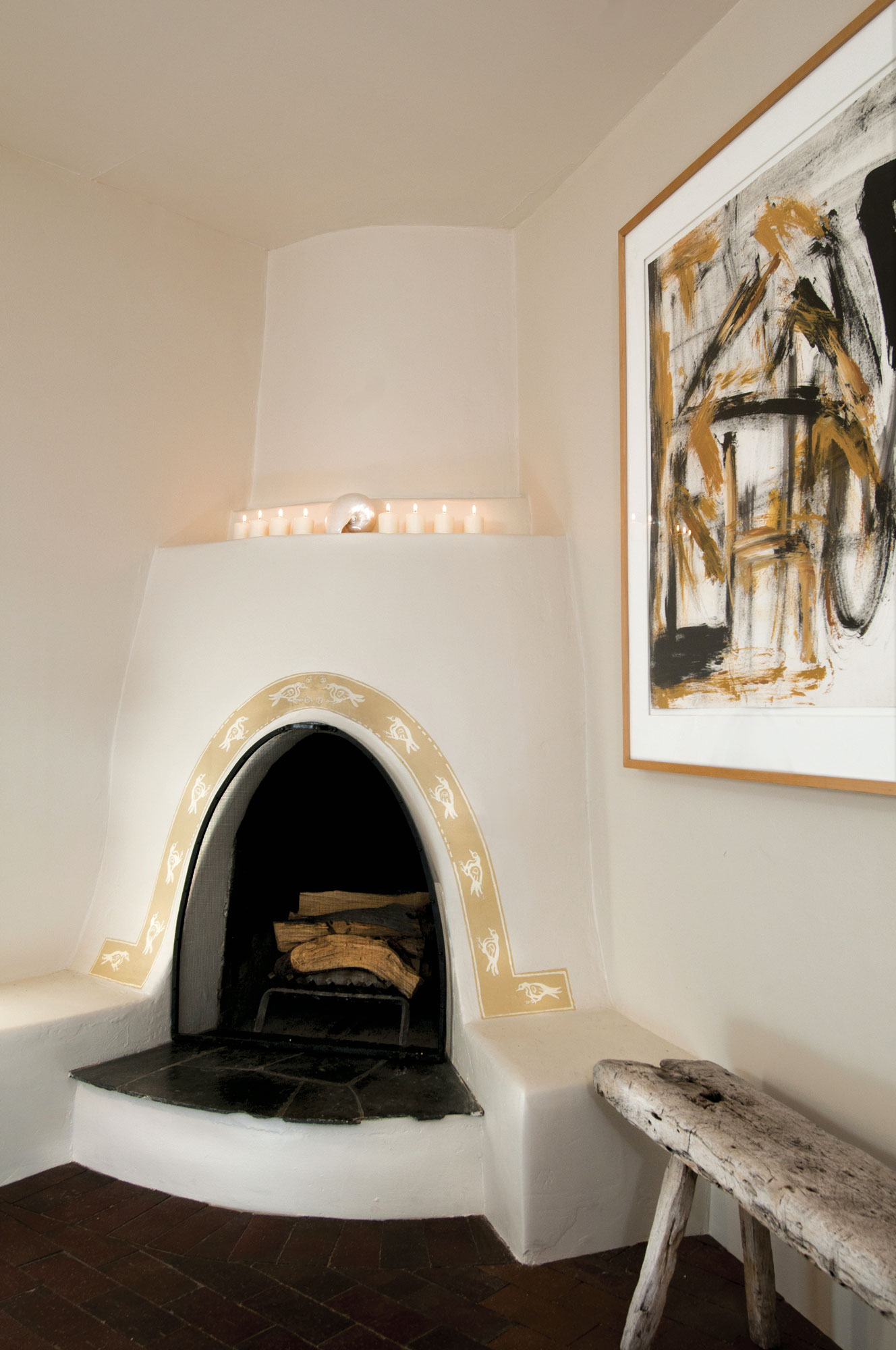
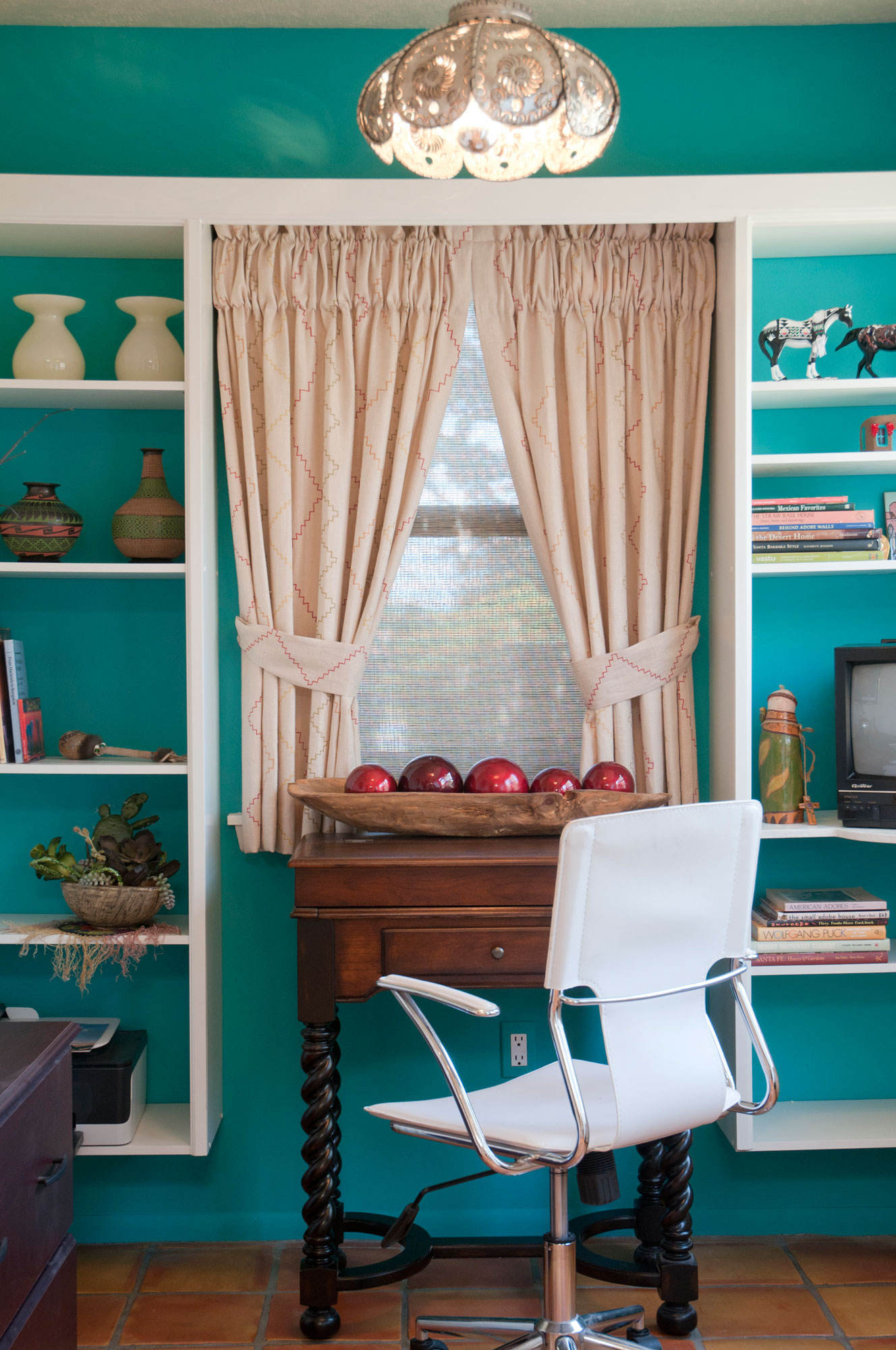
No Comments